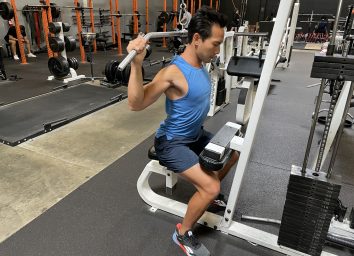One Secret Fitness Trick That Can Add Years to Your Life, Says Top Trainer
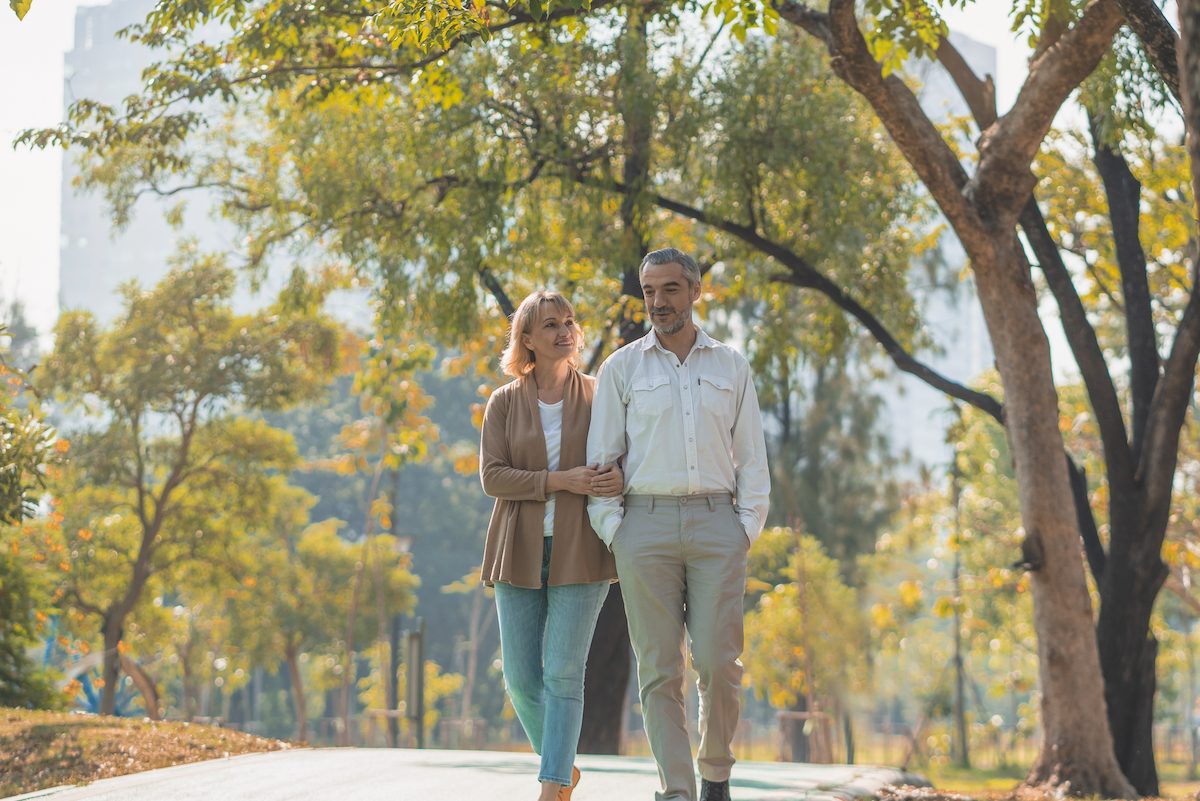
People often associate heart health, regular exercise, and nutritious diets with living longer. However, there are other equally-important factors that can affect your lifespan that get less attention. Specifically, falls and accidents.
According to the Centers for Disease Control and Prevention (CDC), 36 million older adults fall each year. Falls in older adults can cause hip fractures and traumatic brain injuries, injuries that can dramatically impact a person's health and quality of life. In fact, 30,000 older adults die each year due to a fall.
The injuries often caused by falls, such as hip fractures, are also associated with worse mortality and other health issues. The mortality rate a year after getting a hip fracture is between 14 to 58 percent, and those odds worsen the older a person is when they get injured.
If you want to live longer, it's important to incorporate stability and strengthening exercises into your fitness routine. Best of all are unilateral lower body exercises, says Tom Holland, MS, CSCS, CISSN, an exercise physiologist and author of The Micro-Workout Plan: Get the Body You Want without the Gym in 15 Minutes or Less a Day. Adding this type of move into your routine can help you stave off falls in the future and add years to your life.
Never heard of this type of workout before? Here's what you need to know about unilateral lower body exercises, and a few moves to incorporate into your routine. With some work, you'll stay steady on your feet well into your 80s. And for more longevity-promoting exercises, don't miss: Over 60? Here Are the Best Abs Exercises You Can Possibly Do, Says Trainer.
The importance of unilateral lower body moves
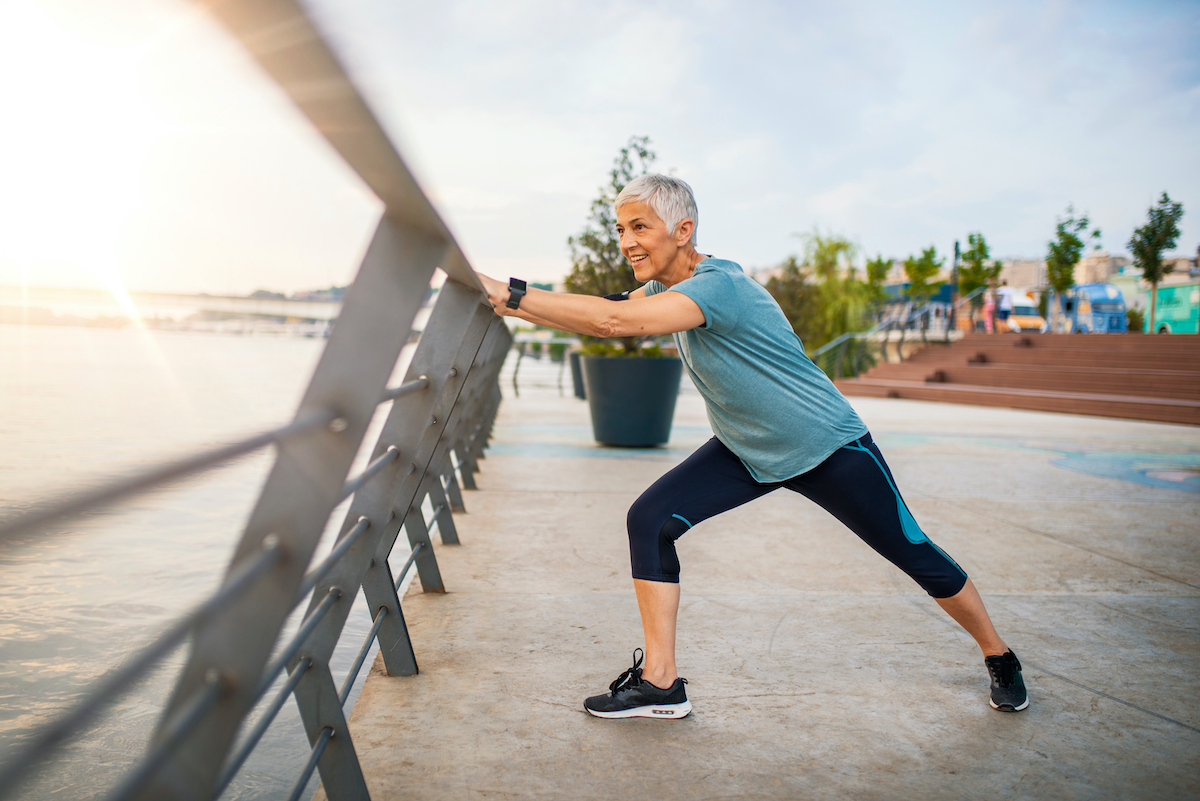
Unilateral lower body exercises work one side of your lower body at a time (read: one leg at a time). These moves require lots of balance and coordination, says Holland, and strengthen leg muscles to keep you steady on your feet.
By working one side at a time, Holland says this kind of training can also help you identify and fix muscular imbalances and weakness in the lower body. Think about it: Have you ever been asked to stand on one leg in yoga class and been fine, then switched to standing on the other leg and almost fall over? Unilateral lower body exercises reveal these kinds of issues and help you address them with more targeted training.
"[Unilateral lower body exercises] can dramatically improve your ability to perform the activities of daily living," says Holland. And by strengthening your legs and balance skills, you'll be less likely to slip and fall.
Now that you know why they're important, here are a few unilateral lower body exercises to try at home. For each move, Holland says to aim to complete two to three sets of 10 to 15 reps on each leg. Do each exercise two to three times per week on non-consecutive days for optimal results, he adds. Want more exercise ideas? These Walking Workouts Will Help You Get Lean.
Try it: Unilateral ball squats
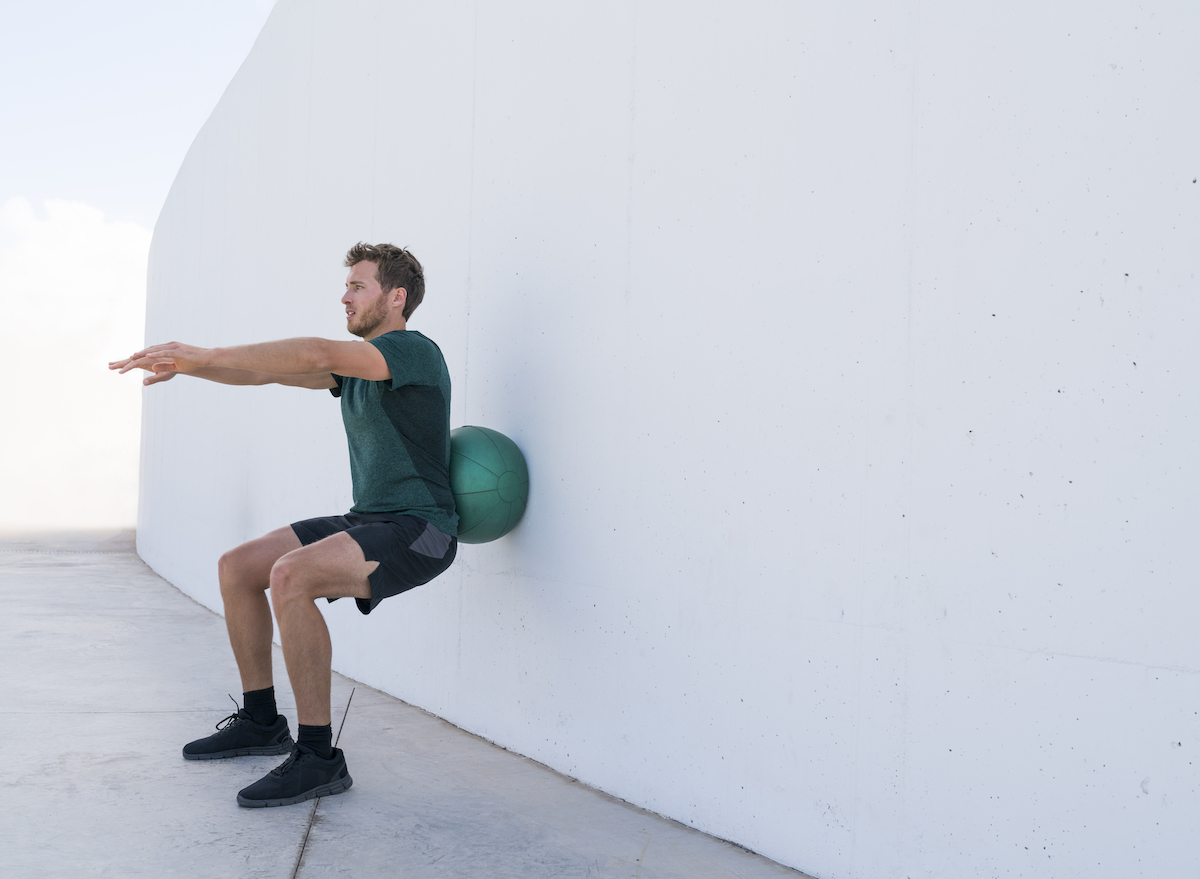
This is Holland's favorite move for improving stability and preventing falls. "It works the entire leg as well as core muscles," he says. It's especially good for your glutes. "Many people have weak glute muscles as a result of time spent sitting, which can result in a variety of musculoskeletal issues. Unilateral ball squats can help strengthen this all-important muscle."
To do it, stand up and place a stability ball between your back and the wall. You should be leaning slightly against the ball. Bend your left leg, and keeping your weight on your right leg, slowly lower your body into a squat position. Your back should stay in contact with the ball as it rolls down the wall. Hold, then move back up into a standing position. Repeat 10 to 15 times, then switch to the other leg.
Try it: Bulgarian split squats
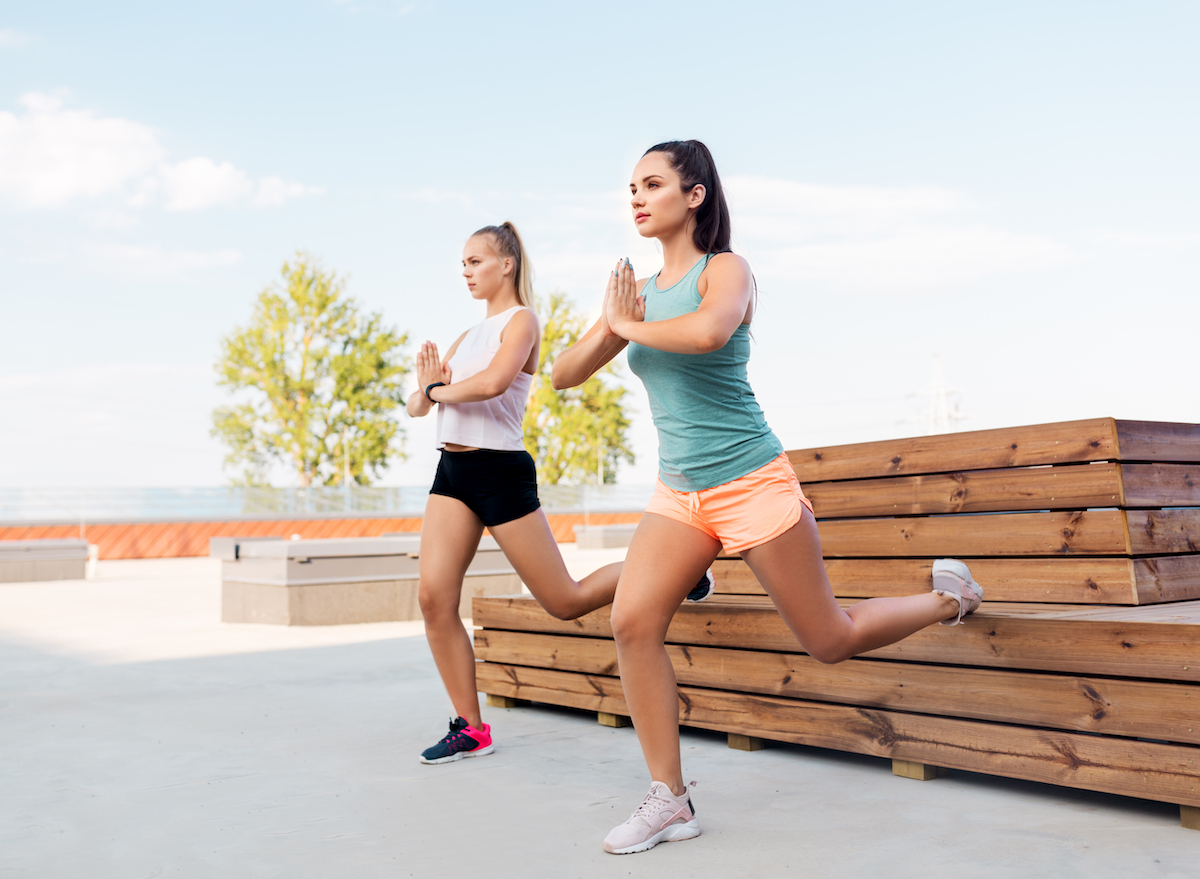
This is another favorite of Holland's, and provides many similar strengthening benefits. To do it, stand with your back foot up on a bench or chair, then step your front foot out about 2-3 feet. (You want to have plenty of room to maneuver.) Lower your body down, keeping your back knee bent and your weight on the front leg. Raise yourself up, and that's one rep. Complete two to three sets of 10 to 15 reps on each leg. Add hand weights for even more of a challenge.
Try it: Single-leg dumbbell deadlifts
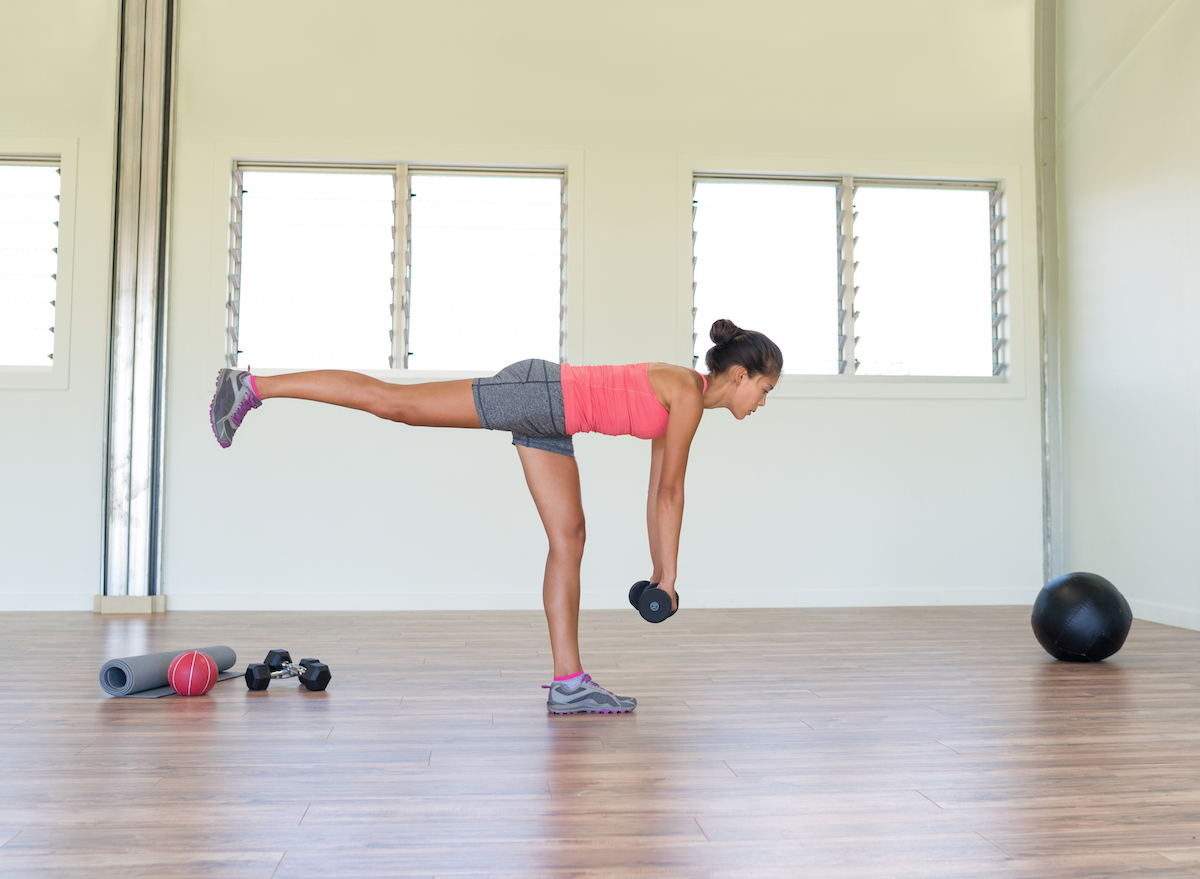
This is another unilateral lower body exercise that Holland recommends for better leg strength and stability. To do it, stand on one leg while holding two dumbbells. Take the leg you're not standing on and lift it behind you, and hinge forward at the hips. As your leg rises, lower your upper body slowly toward the ground. Keep your back flat and your arms hanging in front of you. Pause, then bring your torso back up to standing. Do two to three sets of 10 to 15 reps on each leg. And don't forget to read The Trick for Building Strength After 40.
